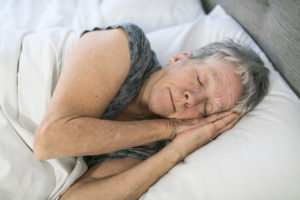 Sleep might not be the central feature of your pain relief plan. But maybe it should be.
Sleep might not be the central feature of your pain relief plan. But maybe it should be.
The beginning and end of daylight saving time is a hassle. Most experts believe it should be done away with. But it can also serve as a semi-annual occasion to assess sleep hygiene.
Advertisement
How you sleep is an often-overlooked component of sleep hygiene. But sleep position could play a role in pain and more.
Data from the National Sleep Foundation suggests most Americans sleep on their sides. However, if you’re dealing with shoulder and neck pain, this might not be the best option. This position puts a lot of stress on those joints that may promote chronic pain.
Stomach sleeping can also contribute to pain. It puts a lot of stress on your neck, but it really goes a lot further than that. If you suffer from pain in the lower back, stomach sleeping could be a significant source.
Back sleeping, on the other hand, might be the best position to limit pain. It generally keeps the body in a straight, natural line, in a position that is likely to cause undue stress on any joints.
There is one drawback to back sleeping, however. It could boost the risk of snoring, or worse, sleep apnea. A way to circumvent this risk is to purchase a thick pillow that cradles your head higher than your chest.
Trying to change your sleeping position, of course, can be very difficult. It can also reduce your quality of sleep in the short-term. If you can’t fall or stay asleep on your back, you can limit the pain risks of side and front sleeping.
Advertisement
Getting a pillow thick enough to support your head and take the pressure off the shoulder is the best fix. This keeps your body appropriately aligned with even weight distribution.
Stomach sleepers, on the other hand, may want to opt for a flatter pillow. That can’t stop you from turning your neck one way or the other, but at least it will keep the rest of your body aligned.
Don’t forget about sleep position when assessing sleep hygiene. It could play a role in treating chronic pain and improving sleep quality.
